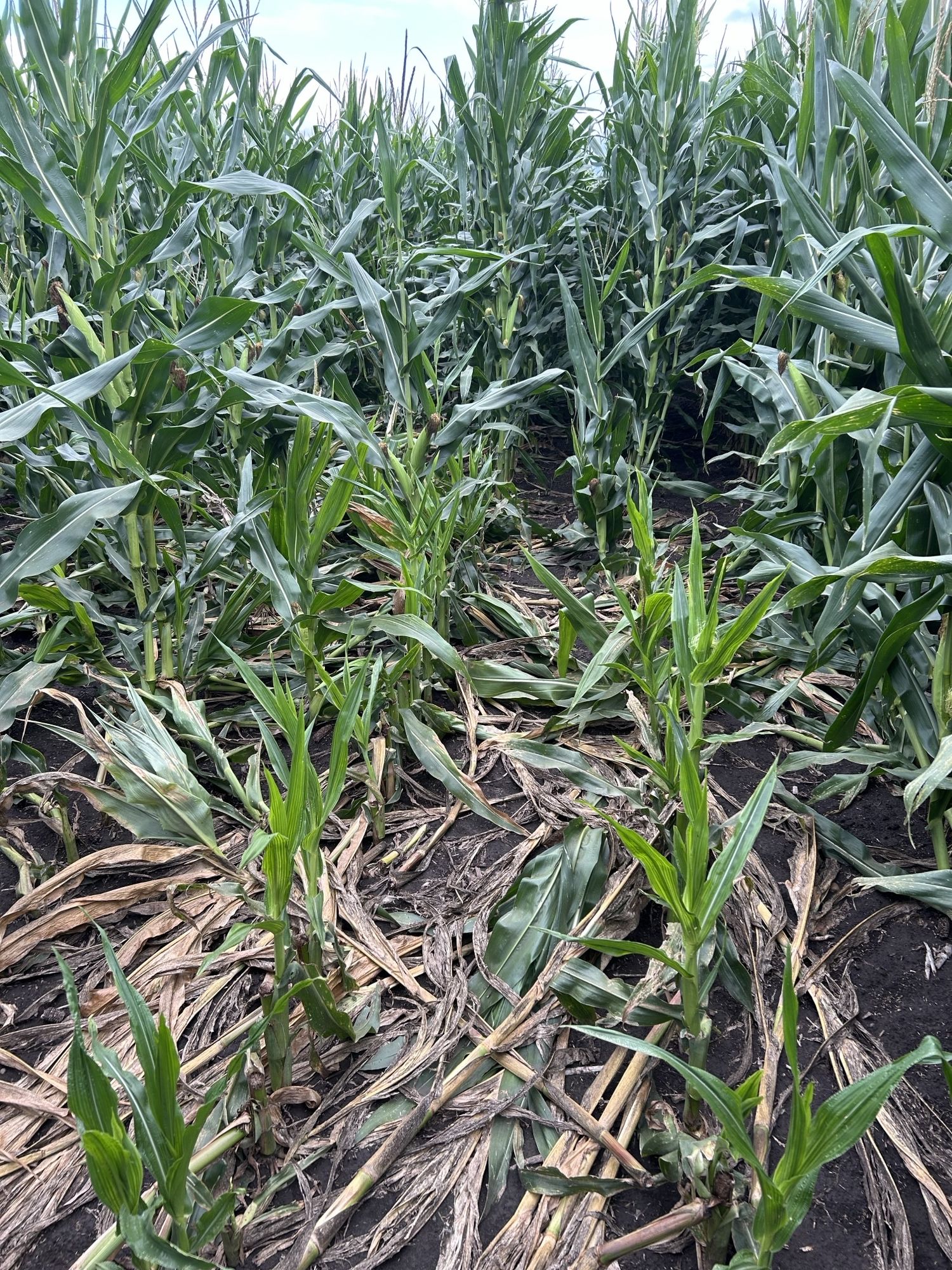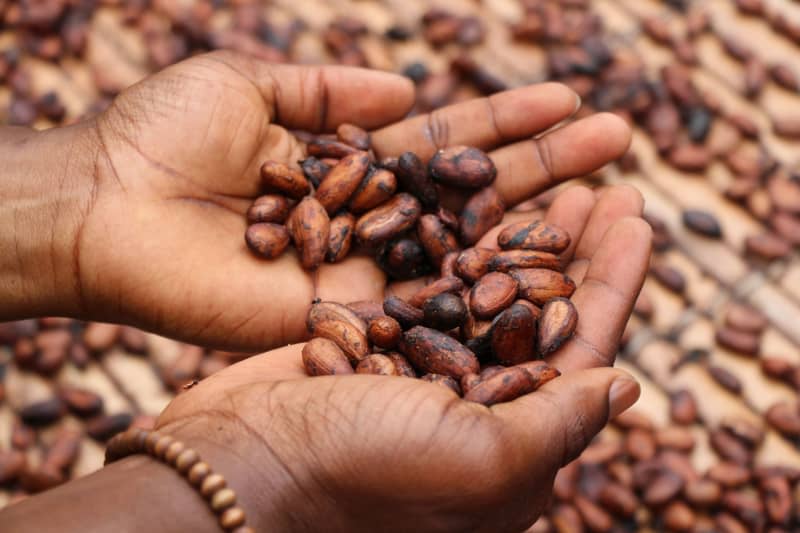Taking to the air to unlock new greensnap insights
How Syngenta's corn trialing is going to new heights

Summer months in the western corn belt of the US provide the ideal growing conditions for farmers. Plenty of sun and the region’s high-quality soil result in rapid growth for vast swathes of corn stretching across the landscape. But the same summer months are also when parts of the corn belt see high windstorms. When those storms hit fields of rapidly-growing corn, stems can buckle and break. This is what corn farmers know as greensnap.
So, when it comes to choosing which corn product to plant, it needs to be from a hybrid that has a better chance of dealing with high winds. Choose corn with low wind tolerance and all it takes is one bad storm to devastate yields late in the growing season.
For those involved in developing new corn hybrids, collecting information about the likelihood of greensnap is a crucial part of not only bringing the best possible corn to market, but also working with the farmer to correctly place it.
Bruce Kreutner, Regional Corn Product Placement Manager for Syngenta, explains that testing for greensnap “has always been a key agronomic indicator, so we’re trying to minimize the risks for farmers by bringing forward products with good greensnap resistance.”
Walking the R&D Trials to observe greensnap damage post helicopter flight to simulate the damaging winds from storms. Syngenta screens thousands of inbred lines and hybrids and drop hybrids that show high susceptibility to greensnap, reducing risk to farmers in the commercial product line up.
Walking the R&D Trials to observe greensnap damage post helicopter flight to simulate the damaging winds from storms. Syngenta screens thousands of inbred lines and hybrids and drop hybrids that show high susceptibility to greensnap, reducing risk to farmers in the commercial product line up.
Walking the R&D Trials to observe greensnap damage post helicopter flight to simulate the damaging winds from storms. Syngenta screens thousands of inbred lines and hybrids and drop hybrids that show high susceptibility to greensnap, reducing risk to farmers in the commercial product line up.
Walking the R&D Trials to observe greensnap damage post helicopter flight to simulate the damaging winds from storms. Syngenta screens thousands of inbred lines and hybrids and drop hybrids that show high susceptibility to greensnap, reducing risk to farmers in the commercial product line up.
Judd Maxwell, Syngenta’s North America Corn Product Placement Manager, says greensnap has always been a challenge for farmers in the western corn belt, but there have been shifts in the regional weather patterns, making it even more serious. Greensnap has “become a bigger issue for farmers because of storms that we see increasing in intensity and frequency across the whole Midwest.”
For those involved in corn trialing this is a tricky problem to test for. After all, as greensnap is caused by damaging windstorms, trials would often need to wait for a storm to hit to be able to gather the important information about how corn hybrids might perform.
Judd Maxwell, North America Corn Product Placement Manager
Judd Maxwell, North America Corn Product Placement Manager
The limitations of this approach are obvious. As Kreutner says, “we’d take opportunistic notes, but wind can hit a field at different points and as a result those notes won’t ever be totally accurate.” Maxwell agrees, pointing out that “we’d get storms that hit crops at different growth stages and sometimes the hybrid would snap, sometimes it doesn't.”
To gain more precise information, what was needed was a way of inducing greensnap in a controlled and replicable way.
The corn trialing team came up with a novel solution. They hired helicopters to fly over corn plots. Using the downforce of helicopter blades helps simulate the damaging high winds from storms. By doing this, the teams can test pre-commercial hybrids for their greensnap susceptibility in a far more controlled and accurate way.
Brookings, South Dakota helicopter-induced greensnap hybrid and inbred line R&D trials.
Brookings, South Dakota helicopter-induced greensnap hybrid and inbred line R&D trials.
Kreutner says that the project began by “doing some research and developing a proof of concept.” In the first stages, Kreutner and the team tested hybrids that were only “one or two years away from commercialization.” The results were a success. He says: “We tested products that we thought were prone to greensnap, and that’s what they showed in the tests, proving that the heritability of the data was really good."
Using helicopters like this now happens across Syngenta’s corn trialing globally. However, collecting precise data isn’t much good unless you can put that information to work.
Maxwell says: “We always want to put our data to work for us. We’re moving into the next phase now, using this information to guide genomic selection and predict how risky a particular new hybrid or inbred might be.”
All of this insight feeds back into the breeding and development of new products too.
Kreutner explains: “We should be getting better products that come to the pre-commercial stage because those which are susceptible to greensnap are getting weeded out before they get to late stages in our pipeline. We can already see this happening. 2023’s launch class proves that we've really improved our greensnap ratings.”
Scroll to view the before and after drone shots from our R&D trial...


Kreutner is excited about the possibilities of expanding this kind of innovative testing alongside new technologies. He says: “We’ve only been doing this for a few years, but we’re starting to look at combining helicopter flights with satellite imagery and drones to further refine this process and precision of the data.”
And, as Maxwell explains: “It's all about derisking the pipeline, making sure we have the best information and product placement to give farmers the leading options in terms of consistency, performance and standability as quickly as we can.”
So, though those helicopters may fly low over the fields, Syngenta’s corn hybrid trialing is flying to new heights.








